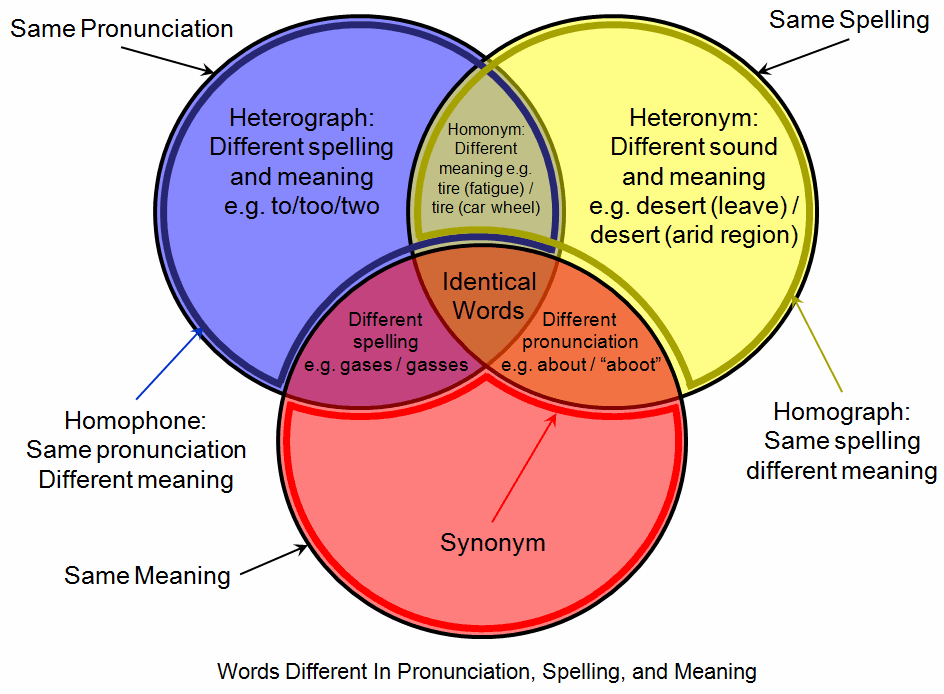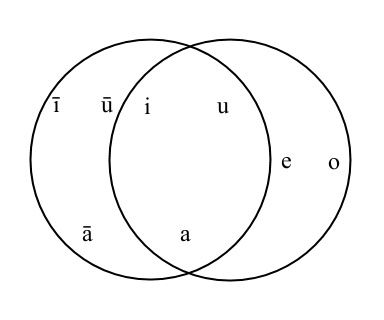|
Consonant Voicing And Devoicing
In phonology, voicing (or sonorization) is a sound change where a voiceless consonant becomes voiced due to the influence of its phonological environment; shift in the opposite direction is referred to as devoicing or surdization. Most commonly, the change is a result of sound assimilation with an adjacent sound of opposite voicing, but it can also occur word-finally or in contact with a specific vowel. For example, the English suffix ''-s'' is pronounced when it follows a voiceless phoneme (''cats''), and when it follows a voiced phoneme (''dogs''). This type of assimilation is called ''progressive'', where the second consonant assimilates to the first; ''regressive'' assimilation goes in the opposite direction, as can be seen in ''have to'' . English English no longer has a productive process of voicing stem-final fricatives when forming noun-verb pairs or plural nouns, but there are still examples of voicing from earlier in the history of English: * belief () – bel ... [...More Info...] [...Related Items...] OR: [Wikipedia] [Google] [Baidu] |
Phonology
Phonology (formerly also phonemics or phonematics: "phonemics ''n.'' [''obsolescent''] 1. Any procedure for identifying the phonemes of a language from a corpus of data. 2. (formerly also phonematics) A former synonym for phonology, often preferred by the American Structuralists and reflecting the importance in structuralist work of phonemics in sense 1.": "phonematics ''n.'' 1. [''obsolete''] An old synonym for phonemics (sense 2).") is the branch of linguistics that studies how languages systematically organize their phonemes or, for sign languages, their constituent parts of signs. The term can also refer specifically to the sound or sign system of a particular language variety. At one time, the study of phonology related only to the study of the systems of phonemes in spoken languages, but now it may relate to any Linguistic description, linguistic analysis either: Sign languages have a phonological system equivalent to the system of sounds in spoken languages. The buil ... [...More Info...] [...Related Items...] OR: [Wikipedia] [Google] [Baidu] |
Homophone
A homophone () is a word that is pronounced the same as another word but differs in meaning or in spelling. The two words may be spelled the same, for example ''rose'' (flower) and ''rose'' (past tense of "rise"), or spelled differently, as in ''rain'', ''reign'', and ''rein''. The term ''homophone'' sometimes applies to units longer or shorter than words, for example a phrase, letter, or groups of letters which are pronounced the same as a counterpart. Any unit with this property is said to be ''homophonous'' (). Homophones that are spelled the same are both homographs and homonyms. For example, the word ''read'', in "He is well ''read''" and in "Yesterday, I ''read'' that book". Homophones that are spelled differently are also called heterographs, e.g. ''to'', ''too'', and ''two''. Wordplay and games Homophones are often used to create puns and to deceive the reader (as in crossword puzzles) or to suggest multiple meanings. The last usage is common in poetry and creat ... [...More Info...] [...Related Items...] OR: [Wikipedia] [Google] [Baidu] |
Phonology
Phonology (formerly also phonemics or phonematics: "phonemics ''n.'' [''obsolescent''] 1. Any procedure for identifying the phonemes of a language from a corpus of data. 2. (formerly also phonematics) A former synonym for phonology, often preferred by the American Structuralists and reflecting the importance in structuralist work of phonemics in sense 1.": "phonematics ''n.'' 1. [''obsolete''] An old synonym for phonemics (sense 2).") is the branch of linguistics that studies how languages systematically organize their phonemes or, for sign languages, their constituent parts of signs. The term can also refer specifically to the sound or sign system of a particular language variety. At one time, the study of phonology related only to the study of the systems of phonemes in spoken languages, but now it may relate to any Linguistic description, linguistic analysis either: Sign languages have a phonological system equivalent to the system of sounds in spoken languages. The buil ... [...More Info...] [...Related Items...] OR: [Wikipedia] [Google] [Baidu] |
Word
A word is a basic element of language that carries semantics, meaning, can be used on its own, and is uninterruptible. Despite the fact that language speakers often have an intuitive grasp of what a word is, there is no consensus among linguistics, linguists on its definition and numerous attempts to find specific criteria of the concept remain controversial. Different standards have been proposed, depending on the theoretical background and descriptive context; these do not converge on a single definition. Some specific definitions of the term "word" are employed to convey its different meanings at different levels of description, for example based on phonology, phonological, grammar, grammatical or orthography, orthographic basis. Others suggest that the concept is simply a convention used in everyday situations. The concept of "word" is distinguished from that of a morpheme, which is the smallest unit of language that has a meaning, even if it cannot stand on its own. Words a ... [...More Info...] [...Related Items...] OR: [Wikipedia] [Google] [Baidu] |
Syllable Coda
A syllable is a basic unit of organization within a sequence of speech sounds, such as within a word, typically defined by linguists as a ''nucleus'' (most often a vowel) with optional sounds before or after that nucleus (''margins'', which are most often consonants). In phonology and studies of languages, syllables are often considered the "building blocks" of words. They can influence the rhythm of a language, its prosody, its poetic metre; properties such as stress, tone and reduplication operate on syllables and their parts. Speech can usually be divided up into a whole number of syllables: for example, the word ''ignite'' is made of two syllables: ''ig'' and ''nite''. Most languages of the world use relatively simple syllable structures that often alternate between vowels and consonants. Despite being present in virtually all human languages, syllables still have no precise definition that is valid for all known languages. A common criterion for finding syllable boundar ... [...More Info...] [...Related Items...] OR: [Wikipedia] [Google] [Baidu] |
Obstruents
An obstruent ( ) is a speech sound such as , , or that is formed by ''obstructing'' airflow. Obstruents contrast with sonorants, which have no such obstruction and so resonate. All obstruents are consonants, but sonorants include vowels as well as consonants. Subclasses Obstruents are subdivided into: * plosives (oral stops), such as , with complete occlusion of the vocal tract, often followed by a release burst; * fricatives, such as , with limited closure, not stopping airflow but making it turbulent; * affricates, which begin with complete occlusion but then release into a fricative-like release, such as . Voicing Obstruents are often prototypically voiceless, but voiced obstruents are common. This contrasts with sonorants, which are prototypically voiced and only rarely phonemically voiceless. See also *List of phonetics topics A * Acoustic phonetics * Active articulator * Affricate * Airstream mechanism * Alexander John Ellis * Alexander Melville Bell * Alfre ... [...More Info...] [...Related Items...] OR: [Wikipedia] [Google] [Baidu] |
Catalan Language
Catalan () is a Western Romance languages, Western Romance language and is the official language of Andorra, and the official language of three autonomous communities of Spain, autonomous communities in eastern Spain: Catalonia, the Balearic Islands and the Valencian Community, where it is called ''Valencian language, Valencian'' (). It has semi-official status in the Italy, Italian ''comune'' of Alghero, and it is spoken in the Pyrénées-Orientales department of France and in two further areas in eastern Spain: the La Franja, eastern strip of Aragon and the Carche area in the Region of Murcia. The Catalan-speaking territories are often called the or "Països Catalans". The language evolved from Vulgar Latin in the Middle Ages around the eastern Pyrenees. It became the language of the Principality of Catalonia and the kingdoms of kingdom of Valencia, Valencia and Kingdom of Majorca, Mallorca, being present throughout the Mediterranean. Replaced by Spanish as a language of gov ... [...More Info...] [...Related Items...] OR: [Wikipedia] [Google] [Baidu] |
Dutch Language
Dutch ( ) is a West Germanic languages, West Germanic language of the Indo-European language family, spoken by about 25 million people as a first language and 5 million as a second language and is the List of languages by total number of speakers, third most spoken Germanic language. In Europe, Dutch is the native language of most of the population of the Netherlands and Flanders (which includes 60% of the population of Belgium). "1% of the EU population claims to speak Dutch well enough in order to have a conversation." (page 153). Dutch was one of the official languages of South Africa until 1925, when it was replaced by Afrikaans, a separate but partially Mutual intelligibility, mutually intelligible daughter language of Dutch. Afrikaans, depending on the definition used, may be considered a sister language, spoken, to some degree, by at least 16 million people, mainly in South Africa and Namibia, and evolving from Cape Dutch dialects. In South America, Dutch is the native l ... [...More Info...] [...Related Items...] OR: [Wikipedia] [Google] [Baidu] |
German Language
German (, ) is a West Germanic language in the Indo-European language family, mainly spoken in Western Europe, Western and Central Europe. It is the majority and Official language, official (or co-official) language in Germany, Austria, Switzerland, and Liechtenstein. It is also an official language of Luxembourg, German-speaking Community of Belgium, Belgium and the Italian autonomous province of South Tyrol, as well as a recognized national language in Namibia. There are also notable German-speaking communities in other parts of Europe, including: Poland (Upper Silesia), the Czech Republic (North Bohemia), Denmark (South Jutland County, North Schleswig), Slovakia (Krahule), Germans of Romania, Romania, Hungary (Sopron), and France (European Collectivity of Alsace, Alsace). Overseas, sizeable communities of German-speakers are found in the Americas. German is one of the global language system, major languages of the world, with nearly 80 million native speakers and over 130 mi ... [...More Info...] [...Related Items...] OR: [Wikipedia] [Google] [Baidu] |
Italian Language
Italian (, , or , ) is a Romance language of the Indo-European language family. It evolved from the colloquial Latin of the Roman Empire. Italian is the least divergent language from Latin, together with Sardinian language, Sardinian. It is spoken by about 68 million people, including 64 million native speakers as of 2024. Italian is an official language in Languages of Italy, Italy, Languages of San Marino, San Marino, Languages of Switzerland, Switzerland (Ticino and the Grisons), and Languages of Vatican City, Vatican City; it has official Minority language, minority status in Minority languages of Croatia, Croatia, Slovene Istria, Romania, Bosnia and Herzegovina, and the municipalities of Santa Teresa, Espírito Santo, Santa Tereza, Encantado, Rio Grande do Sul, Encantado, and Venda Nova do Imigrante in Languages of Brazil#Language co-officialization, Brazil. Italian is also spoken by large Italian diaspora, immigrant and expatriate communities in the Americas and Austral ... [...More Info...] [...Related Items...] OR: [Wikipedia] [Google] [Baidu] |
Obstruent
An obstruent ( ) is a speech sound such as , , or that is formed by ''obstructing'' airflow. Obstruents contrast with sonorants, which have no such obstruction and so resonate. All obstruents are consonants, but sonorants include vowels as well as consonants. Subclasses Obstruents are subdivided into: * plosives (oral stops), such as , with complete occlusion of the vocal tract, often followed by a release burst; * fricatives, such as , with limited closure, not stopping airflow but making it turbulent; * affricates, which begin with complete occlusion but then release into a fricative-like release, such as . Voicing Obstruents are often prototypically voiceless In linguistics, voicelessness is the property of sounds being pronounced without the larynx vibrating. Phonologically, it is a type of phonation, which contrasts with other states of the larynx, but some object that the word phonation implies v ..., but voiced obstruents are common. This contrasts with sonorant ... [...More Info...] [...Related Items...] OR: [Wikipedia] [Google] [Baidu] |
Assimilation (linguistics)
In phonology, assimilation is a sound change in which some phonemes (typically consonants or vowels) change to become more similar to other nearby sounds. This process is common across languages and can happen within a word or between words. For example, in English "handbag" (), the often shifts to in rapid speech, becoming , because and are both bilabial (produced with both lips), and their places of articulation are similar. It occurs in normal speech but is more frequent in faster speech. Sometimes the change is accepted as canonical, and can even become recognized in standard spelling: implosion pronounced with , composed of ''in-'' + ''-plosion'' (as in ''explosion''). Sound segments typically assimilate to a following sound, but they may also assimilate to a preceding one. Assimilation most commonly occurs between immediately adjacent sounds but may occur between sounds separated by others. For example, in "handbag," the is sometimes elided (omitted), which caus ... [...More Info...] [...Related Items...] OR: [Wikipedia] [Google] [Baidu] |




